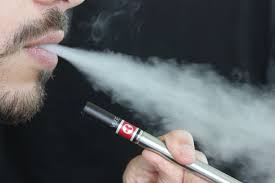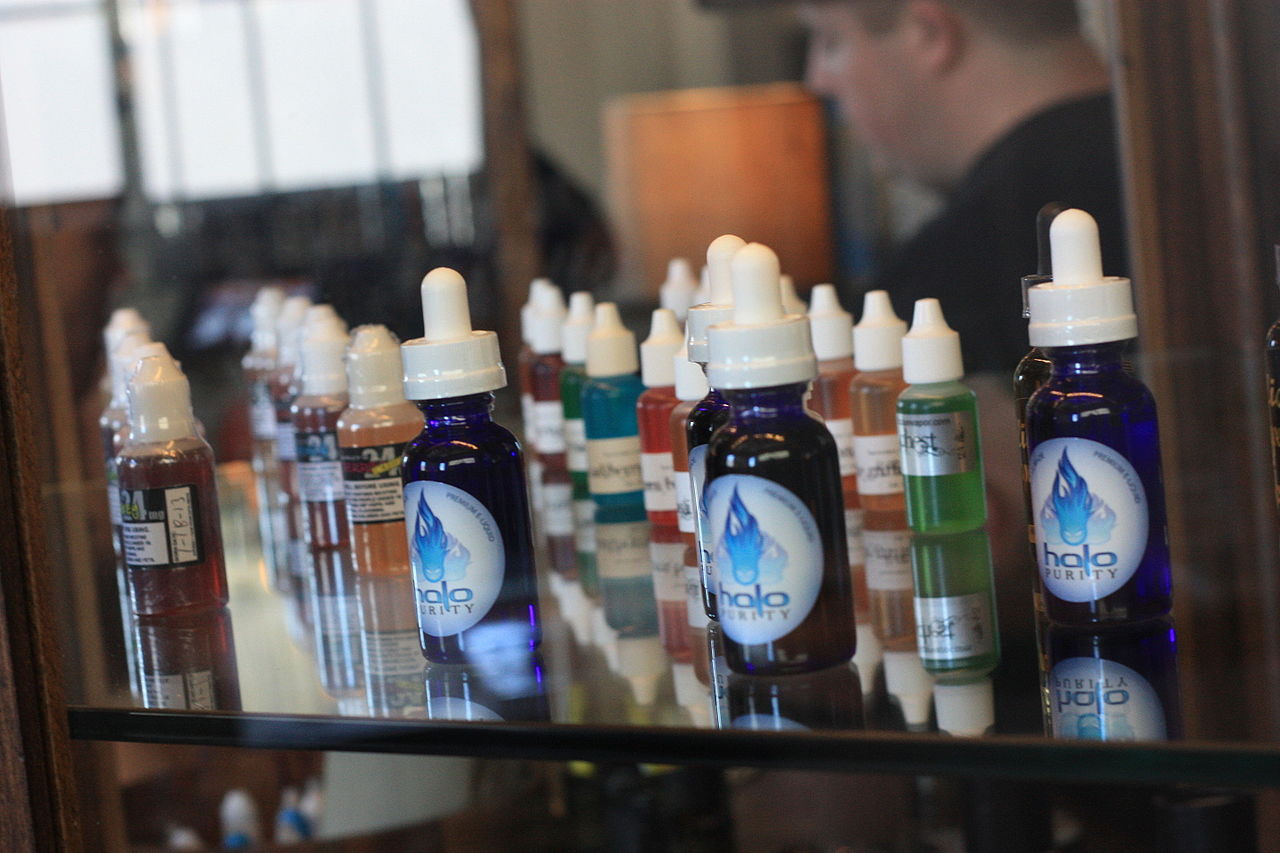Vaping is a recent harm reduction alternative to smoking cigarettes or tobacco. There are various misconceptions and myths about vaping that not many people have heard about. Vaping has been found to be a healthier alternative to smoking because it burns at a lower temperature and exposes you to less harmful contaminants than a conventional cigarette.

Many adults worry that younger folks could be attracted to it due to its tasty flavours such as peach, cotton candy, fruit loops, strawberry cream, churros, and even “nerdz” candy. Even when e-cigarettes and vaporizers are outlawed for anyone under 19, keep in mind that teens from all generations have gotten access to cigarettes, and will most likely continue to vape in this generation as well. The best thing to do now is to educate yourself and others about vaping so you’re in the know.
What is vaping? How does it work?
A vaporizer is a battery powered heating device that essentially bakes your product, whether it be “e-juice”, cannabis, oils, or DMT which then converts itself into a vapor that can be inhaled.
Vaporizers come in 2 forms, regulated mods (modifications), or unregulated. Unregulated (variable wattage) mods provide a simple switched connection between the battery and the coil. A regulated mod (temperature control/TC) provides more intricate circuit boards and semiconductors to control the voltage/wattage setting. Many mods will also allow a custom temperature coefficient resistance/TCR—resistance-change factor per degree Celsius of temperature. TC mods will work with either nickel, titanium, stainless steel, and kanthal coils; although kanthal will not fluctuate in resistance as it heats up, so in turn is not the best metal to use for TC.
Atomizers, the thing that vaporizes a liquid, also come in 2 forms: drippers, and tanks. Drippers (rebuildable dripping atomizer/RDA) made up of 2 posts holding together a coil and wick that one would build themselves. To vape from a RDA, you manually remove a cap, drip your “juice” inside onto the coil and wick, and take a hit. Tanks (rebuildable tank atomizer/RTA) can either be built on your own, or come pre-built factory coils that work with a deck on the bottom of the atomizer. Tanks are a bit different because they use a chimney and bell system for vaporizing. And a rebuildable dripping tank atomizer/RDTA, which is essentially a mix of both.
E-liquids have either propylene glycol (PG), Polyethylene glycol (PEG),or Vegetable Glycerine (VG). PG produces a thin vapor at room temperature, hold flavour really well, and hits fairly harsh on the throat. VG has a thicker vapor, but holds less flavour, and is smoother on the throat. Most commercial “juices” will contain a mix of both unless specified. PEG similar to PG, has many medical uses and is used in vape juice to maintain an even mixture.

All this can be very confusing in which one would recommend pre-built factory parts/vapes for anyone new to “e-cigarettes”.
Is it bad for you?
Although vaping is commonly known as a “healthy” alternative, it can still have some adverse effects on the body. Many rumours surrounding a link between vaping and popcorn lung have spread throughout the years. There are still a few things to learn:
- The majority of cigarette e-juice still contains nicotine; you can still experience cravings and withdrawal effects.
Notwithstanding the fact that while a standard cigarette contains way more unknown chemicals, vaping can still be harmful. While nicotine is a toxic substance, you can still experience its effects such as a raise in blood pressure, spikes in adrenaline, nausea, abdominal pain, and in some cases heart failure. - You are still breathing in heated vapors, meaning that you are still at risk of burning/damaging your lungs.
“Popcorn lung” is another term for bronchiolitis obliterans. This irreversible disease affects the bronchioles causing coughs, shortness of breath, wheezing, fatigue, and blocked airways. Some flavours may contain a flavouring chemical called diacetyl which can also be found in microwave popcorn butter flavoring; hence the term “popcorn lung.” Diacetyl has also been found in other products including tobacco cigarettes. To summarize, vaping is not directly linked to popcorn lung. - There are few regulations put in place for e-juice flavourings.
- Use e-juice with a higher VG concentration to avoid burn.
- Use internal batteries and NOT removable 18650 batteries. Removable batteries have been known to cause injury. If using these batteries, always make sure that they are always encased in a protective wrap. USB charging will always have a better protection circuitry.
Vaping DMT
Vaporizing DMT has grown more popularity because of the convenience and benefits. Because you are adding an extra ingredient to your vape, it’s important to customize the settings, ingredients, and tools to better fit a DMT vaping experience.

First off, consider the vape itself. Some inexpensive vapes and vape pens will often not provide enough power for a DMT “breakthrough”. It is recommended to use a minimum of 40-50 volts for vaping DMT. Both RDA and RTA are acceptable for DMT purposes. Because DMT’s boiling temperature is 160°C, setting an ideal vaporizer temperature would be around 180°C.
When it comes down to making the DMT juice, dissolving the DMT is more effective using PG; therefore using a juice that is higher in PG concentration than VG (50-70% VG). Using a juice without nicotine is preferable, As nicotine may have some MAOI-inhibitors that interfere with the MAO enzyme, stopping the breakdown of DMT. When dosing your DMT, scaling the crystals is the best method of dosing.
Vaping Cannabis

Now with the legalization of cannabis, there are many alternative ways of consuming it, including vaporizing. Vaporizing cannabis can come in a variety of methods which include, table top vaporizers, portable, vape pens, dab pens, and vape cartridges. Each one has its own uses.
Table top vaporizers are stationary vapes with a heating chamber where one would put their concentrates or flower, a dial to control the heat settings, and a mouth piece. There are a variety of table top vaporizers such as dab rig vaporizers, balloon vaporizers, and the normal mouth piece vaporizers.
Portable vaporizers are a more convenient and discreet way of vaping cannabis. They work similar to a table top vaporizer as in where you put in your product in a heating chamber with temperature control for how thick/potent you’d want the smoke.
Vape cartridges come in 3 main forms: regular flavoured, raw, and strain specific terpene cartridges. Regular flavoured cartridges contain flavouring agents which are diluted into whatever oil is chosen. Raw cartridges contain only cannabis distillate without any cutting agents or terpenes that often give plants their aroma and flavour. Lastly there are strain and terpene specific cartridges that contain only terpenes not found in other cartridges. Because of the distillation process that removes the terpenes from the plants, this makes it easier to add flavour and aroma to these specific cartridges.
Beware that there have been reports of counterfeit vape cartridges in states in the USA where cannabis is illegal that may contain pesticides and even synthetic cannabinoids. It is unknown if such counterfeit cartridges have been reported in Toronto.
Vaping meth
There is little to no studies surrounding meth vaping. Vaporizing meth, like other specific substances, require specific methods because meth is pretty much useless if mixed with glycerin while using an atomizer for wax or oils. Secondly, using a rig that does not have exposed coils as the high temperatures can cause the meth to burn and ignite (no good). Using a ceramic donut coil that allows TC (temperature control) helps evenly distribute the heat without burning the meth. As well with coil-less glass atomizers, quartz, and safely dosing your meth with a wattage below 20 and a temperature range of 140C.
Vaping other drugs
By this point you might be questioning whether you’d be able to vape just about anything. This is a question of whether the substance is combustible or smokable and to take into account the risks of vaporizing such substances. It is important to keep in mind any and all other harm reduction practices. Do your research before vaporizing anything; things such as risk of overdose, higher peaks, duration, etc, are all important variable to being safe.
How can I practice harm reduction while vaping?
At times, quitting vaping is not an option. Maybe it’s the best way for you to smoke, or you like the effects of a vaporizer better than other methods. Whatever it is, there are always tons of tips and tricks to how you can practice safer vaping:
- Lower your heat settings: modified vapes can often have a customized heat preference and/or setting. having a temperature setting on your vape allows you to puff some f a t clouds, but lowering those settings can help your lungs in the long term.
- Check the ingredients. Look for nicotine free products and flavours without the diacetyl ingredient or any other harmful chemicals.
- Do not hold the vapor in your lungs for longer than they should. Remember to exhale.
- Take smaller/shorter puffs to give your lungs a break.
- Give yourself breathing breaks between each puff.
- Avoid nickel and titanium coils, as they can produce harmful oxides when overheated. Stainless steel can be used as an alternative.
- Using “raw” or juices with less PG or PEG. Recent studies have found that inhaling PG could worsen asthma and allergies. Both PEG and PG release harmful carcinogens (formaldehyde and acetaldehyde) when vaporized at high temperatures.
- Add menthol to your DMT juice for a smoother hit.